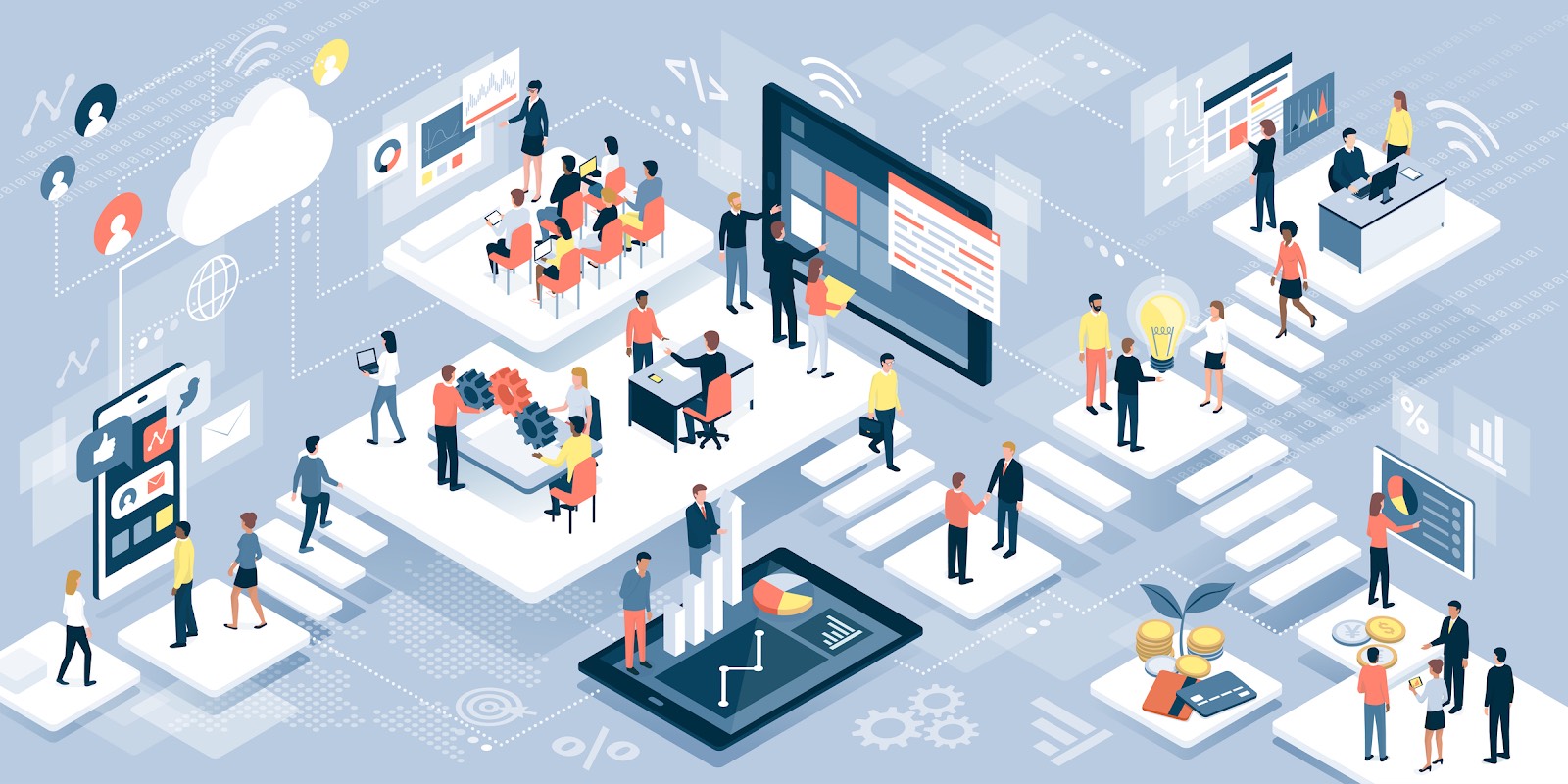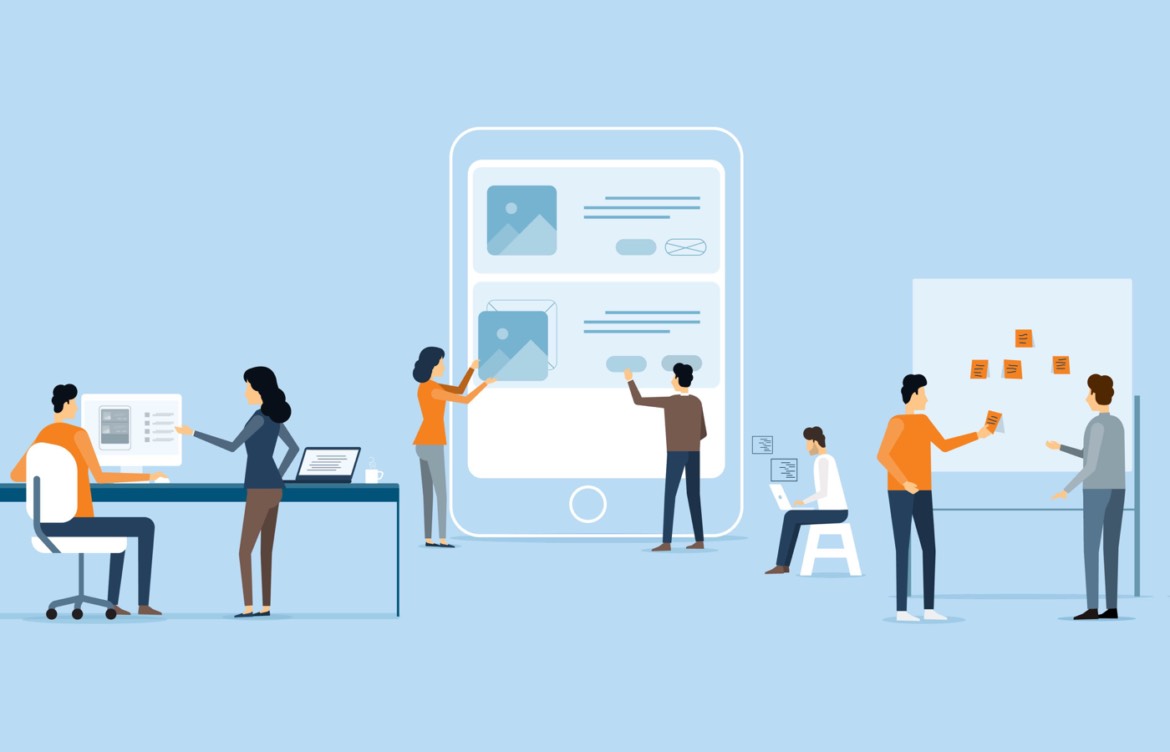1. What is digital workplace? An accurate view of a digital office
Today, digital tools and platforms such as Skype, Zoom, Office 365 are no longer strange to any business. An employee's workday begins with checking work messages and emails or participating in online meetings. However, just by applying digital tools to daily operations has it really turned the organization into a true digital companies? Let's review this familiar yet strange definition to find the answer:
A digital workplace gives employees access to all the digital tools they need to handle their day-to-day work, without having to go to the office or meet face-to-face.
However, Digital workplace is not a collection of separate, discrete work tools for each different task. Digital workplace's mission is to solve a larger problem - the overall picture of corporate governance. Because the nature of the organization is a unified operating system, where every link is closely linked with each other. Digital workplace integrates all the different apps used in the organization and puts them on a single platform to create a seamless, seamless work experience for employees.

2. Why do companies need to implement Digital workplace transformation?
Promote a culture of collaboration
By integrating the technologies employees use (from email and messaging to online meeting and task management apps), digital workplace breaks down communication barriers and fosters collaboration in the workplace. organization. All employees can connect and coordinate to perform tasks just through the computer screen, from which the enterprise will optimally exploit the collective strength.
Increased flexibility
With Digital workplace, employees' working environment is no longer limited by 4 walls. All their daily work can take place anytime, anywhere. Geographic distance will no longer be an issue with unscheduled meetings or a packed schedule. Moreover, the digital office promotes the trend of working from anywhere, giving employees more autonomy in their work and increasing satisfaction.
Improve work performance
Thanks to the flexibility and seamlessness of digital tools, companies can multiply productivity by automating manual tasks, saving time searching and accessing information, thereby reducing waste in the working process.
Cut operating costs The transformation to a digital office model is the ideal solution to optimize operating costs for companies. For example, travel expenses between branches will be completely cut thanks to online meetings. Enhance customer experience Delivering a quality customer experience traditionally requires a lot of resources and resources. However, with the power of digital tools, the customer care process can be automated while ensuring service quality. 3.5 steps to build a digital working environment for businesses
Step 1. Define a vision The work of creating a digital working environment for companies must start from defining a clear vision. That vision must be drawn from a thorough analysis of the needs and performance of the organization. Let's have an overview of the operating system of the business and ask the question: Are traditional working methods still effective? What tools do employees need to do their jobs better? The best way to find the answer is to survey the entire HR team and talk directly with managers and digital transformation consultants to provide a clear direction.
Step 2. Make an implementation plan So how do you set up a blueprint for your Digital workplace transformation strategy? It's surveying the entire organization - who are part of the e-office, make sure every employee has the opportunity to participate in the process and contribute. An implementation plan should clarify the following: How will you use technology to improve employee experience and enhance productivity? How can you create workspaces to increase employee creativity and collaboration?
Step 3. Build a Digital Toolkit The digital toolkit includes all the tools and technology employees need to get their work done. However, remember that digital tools only really work if they meet the strategic vision requirements you identified above. Otherwise, new tools may benefit only certain departments or groups — or worse, no one at all. So what should a complete digital toolkit include? In most organizations, digital tools will be divided into 8 categories with specific functions and purposes: Communication – allowing employees to connect and communicate quickly: email, messaging Productivity – support employees to work effectively: word processor (word, docs), spreadsheet software (excel) , sheet), presentation software (powerpoint) Collaboration – allows employees to work together: group meetings, web conferences (online conferencing) Communication – supports internal information sharing: blogs, intranet management software suite – ERP, CRM, HRM, etc. Crowdsourcing – allows organizations to collect employee feedback and ideas: polls, forums, surveys Connect – help easily contact every member of the organization: employee directory, organization chart. Mobile devices – allow remote working: laptop, smartphone, remote scanner.

Step 4. Implementation
Before making any changes in your organization, you need to address any issues related to risk management and address potential problems that may arise when adopting new technology. An ideal Digital workplace model maximizes connectivity and collaboration while minimizing risk. Make sure the rollout goes smoothly by:
Closely monitor information to analyze and predict possible risks related to security and information security issues
Train employees, ensure that all employees clearly understand how Digital workplace operations to avoid confusion and embarrassment when approaching a new working environment
Provide a unified communication model for an organization and prevent the formation of isolated groups.
Step 5. Evaluate and improve
Re-survey whether the digital workplace application has any inadequacies in the operating process. At the same time, re-evaluate the results during the implementation process to improve and optimize the points that are still unreasonable












Replies to This Discussion